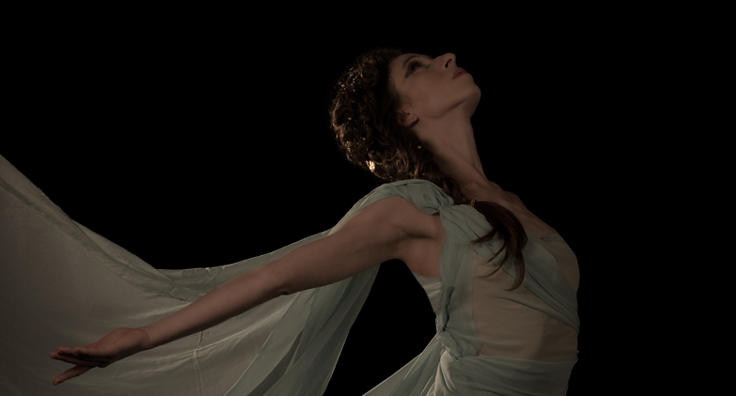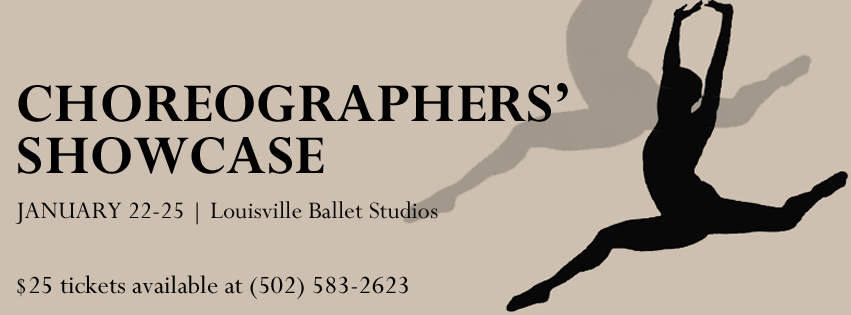Brienne Wiltsie as Cleopatra. Photo: Sam English
Cleopatra: Queen of Kings
Choreography by Erica De La O + Roger Creel
Music by Scott Moore
Creative Production by Roger Creel
Step Choreography by Chris Malone + Antae Dickerson
Costume Design by Alexandra Ludwig
Review by Keith Waits
Entire contents copyright © 2019 Keith Waits. All rights reserved.
As the twilight enveloped the stage in Central Park, I was aware of how a gentle breeze caught the gauzy fabric that adorned some of the dancers. It was a simple accent to the graceful movements, a small thing really, but we never get that effect onstage in the Whitney Auditorium and it lent an extra dash of magic to the proceedings.
It also made me wonder how much the natural environment influences the choreographer’s approach when creating a new work to premiere in the C. Douglas Ramey Amphitheatre. The Pastoral motif is common in ballet, usually created through artifice, but here the dance takes place in front of a living tree of some scale, with crickets an inescapable part of the sound design.
Roger Creel is no stranger to choreographing for this environment, and for this production, he has Erica De La O for a collaborator in her debut as a choreographer. A pre-show discussion opening night revealed the depth of understanding of the historical background the pair employed. For example, that Cleopatra was not Egyptian-born but Greek, a member of the Ptolemy family that ruled Egypt for hundreds of years. Their Cleopatra is a story filled with power struggles, sexual passion, and violence. It follows history by communicating these shifting dynamics in elemental terms. The program provides a tidy summation of the events so that we can connect the dots, but our common knowledge of Julius Caesar, Marc Antony, and Cleopatra would inform our reading of the action without it, I think.
Scott Moore’s kinetic score is absolutely crucial in fleshing out the narrative beyond the sometimes abstract communication from the movement of the human form. The cinematic rhythms echo the tumultuous emotional and physical conflict in the story, and the visceral impact of the percussion is fashioned to work in sync with the corps of young step dancers that represent the Egyptian people onstage. Moore’s score also survives the intrusion of jet planes more easily than actors speaking dialogue.
Alexandra Ludwig’s costumes for the principals are barely there in the beginning, light and ethereal, but the bodies gain more covering as time progresses. I found it interesting that very little was done about designating Caesar or Cleopatra through their appearance: no crowns or trains of fabric follow them.
Instead, the staging and choreography bring forth the characterizations, and Brienne Wiltise makes you see Cleopatra with subtlety, as does Ryo Suzuki as Julius Caesar. In time, the trappings of office are made apparent, but only to reinforce what we have already discerned. Sanjay Saverimuttu is given slightly more pronounced movement to lead us into Pompey’s betrayal. There was a nifty step forward movement that was employed at various points that, for Pompey, was rendered with explicit emphasis. It was almost as if the character was not allowed the same grace as the other Romans. The character, not Mr. Saverimuttu, who vividly made the most of his outcast expression.
The number of killings and suicides make this the most violent ballet in my experience, but the deaths are artfully staged, with an especially impactful assassination scene for Caesar that beats any I have seen in productions of Shakespeare’s play (sorry Matt Wallace), the multiple stabbings propelling Suzuki’s body around the stage in eloquent surrender.
Creel and De La O’s choreography charts the early seductions and conflicts with exuberance, but the stage fills with so much loss and tragedy, the fall of one empire underway as another is on the rise, built on death and suffering. The dancer’s bodies give in to the moral weight of what transpires and in the final moments, a very limited but dramatic lighting scheme closes the performance, leaving darkness filled only with nature.
Featuring Brienne Wiltsie, Kayleigh Western, Lexa Daniels, Isabella Sumera, Ryo Suzuki, Erica De La O, Jeremy Hanson, Minh-Tuan Nguyen, Sanjay Saverimuttu, Tristan Hanson, Sara Eaton, Carrie Tolfo, James Joyce, Jaylyn Garner, Chrissaun Colbert, Terryn Elliot, Edyn Diallo, Lea’Don Pawley, Cyrolyn Crayton, Tariya Gartin, Aveon Williams, Dierra Bussey.
Cleopatra: Queen of Kings
July 31 – August 4 2019 @ 8:00pm
Louisville Ballet
Douglas Ramey Amphitheatre
Central Park
Louisville, KY 40202
FREE ADMISSION
Keith Waits is a native of Louisville who works at Louisville Visual Art during the days, where he is Managing Editor of their Artebella blog, and host of LVA’s Artebella On The Radio on WXOX-FM 97.1/ ARTxFM.com. But spends most of his evenings indulging his taste for theatre, music and visual arts. His work has appeared in Pure Uncut Candy, TheatreLouisville, and Louisville Mojo. He is now Managing Editor for Arts-Louisville.com.





